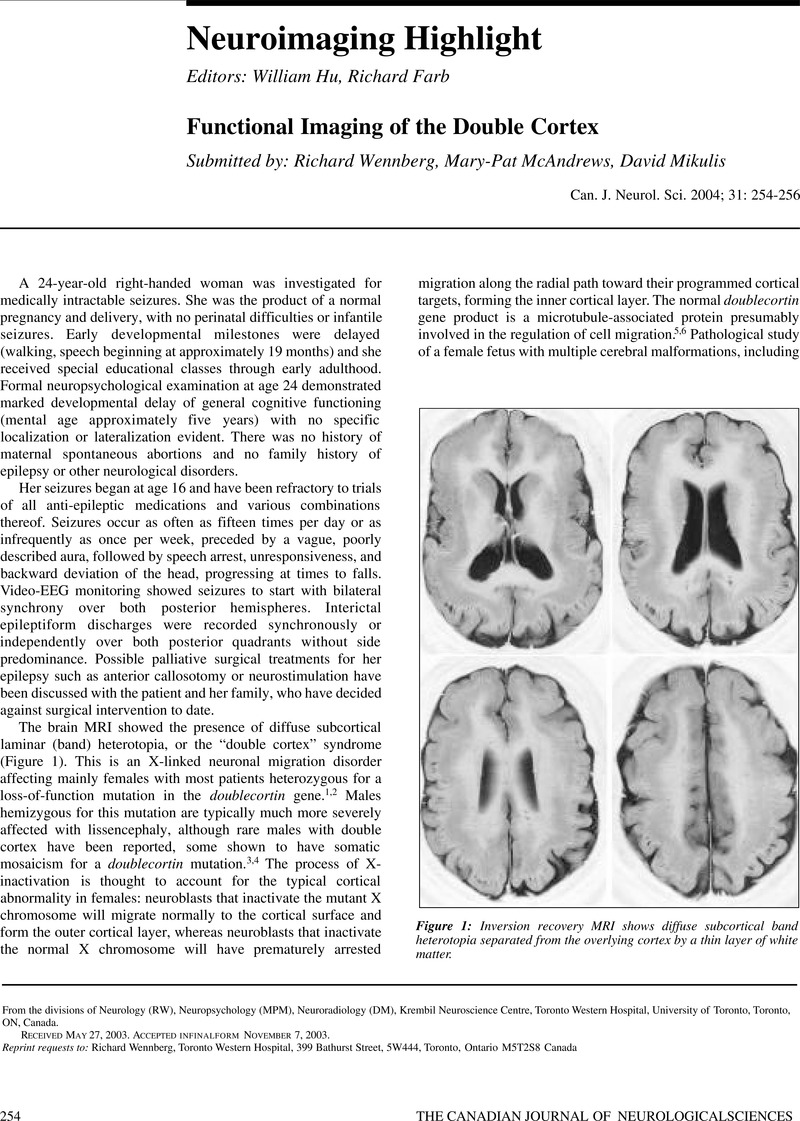Crossref Citations
This article has been cited by the following publications. This list is generated based on data provided by Crossref.
Koutsouraki, Ephrosyni
Timplalexi, Georgia
Papadopoulou, Zoe
Costa, Vasiliki
and
Baloyannis, Stavros
2008.
A Case of Intractable Epilepsy in a Double Cortex Syndrome.
International Journal of Neuroscience,
Vol. 118,
Issue. 3,
p.
343.
Plantier, Vanessa
Watrin, Françoise
Buhler, Emmanuelle
Martineau, Fanny Sandrine
Sahu, Surajit
Manent, Jean-Bernard
Bureau, Ingrid
and
Represa, Alfonso
2019.
Direct and Collateral Alterations of Functional Cortical Circuits in a Rat Model of Subcortical Band Heterotopia.
Cerebral Cortex,
Vol. 29,
Issue. 10,
p.
4253.



